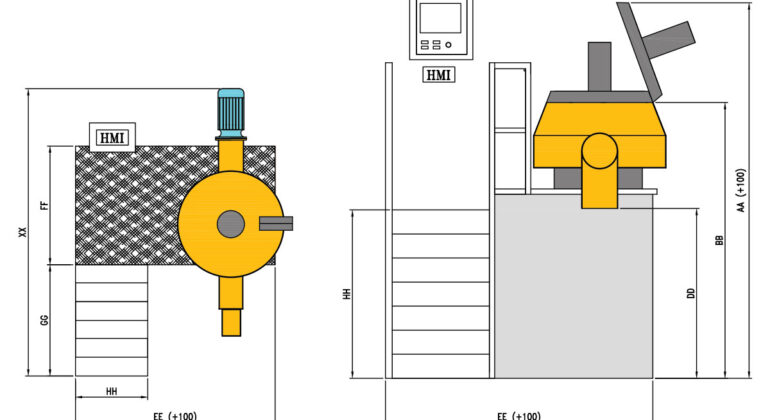5 Common Mistakes to Avoid When Using a Rapid Mixer Granulator
The Rapid Mixer Granulator performs dry mixing & wet granulating by basic design of the special three arm of the mixing impeller and sequences of the mixing process in the cylindrical mixing drum with a rounded connection to the base plate, achieving another special effect. Dry mixing is the first step of the process. Once the products are mixed by the bottom drive rotating tool (impeller), a binder is added to the product. The binder can be sprayed in as part of a binding solution or it can be added in dry form. After this Mixing process, the spraying process occurs through one or more spray nozzles, and by mixing action of the main mixing tool (impeller) and the chopper blade it is quickly dispersed into the product.
Rapid Mixer Granulator Machine is used for the homogeneous mixing of granulation powder used for the production of tablets. It is also used for the process of wet mixing & fast drying. humidifying of the powder in Chemical, Cosmetic, Food, Plastic, Pharmaceutical, General Mixing Industries, etc.
Mistakes to Avoid When Using a Rapid Mixer Granulator:
1. Poor Impeller Blade Design: Proper impeller blade design is essential for efficient mixing. Using blades that are too tiny or incorrectly positioned might cause uneven mixing and granulation. Make sure that the impeller blades are designed to lift and push the material properly, promoting good circulation even at low speeds.
2. Inadequate Chopper Speed: The speed of the chopper blades impacts the size of the granules. Running the chopper at the wrong speeds can result in large or undersized grains. To achieve the best results, set the chopper speed to match the required granule size.
3. Improper Wet Milling Procedure: Wet milling is an important phase in the granulation process. Using a particle size reduction milling machine with improper screen apertures can result in uneven granule sizes. It is critical to utilize a screen built specifically for wet milling and to properly position the milling machine near the discharge port of the high-shear granulator.
4. Ignoring Air-Purged Seals: Air-purged seals are intended to keep an envelope of air around the granulator, preventing powder leakage and contamination. Failure to maintain these seals might result in product loss and reduced quality. Regular inspection and maintenance of air-purged seals are required to ensure their efficiency.
5. Incomplete Clean In Place (CIP) Process: The CIP process is critical for keeping the fast mixer granulator clean and functioning properly. Incomplete CIP methods might result in cross-contamination and product quality concerns. Make sure the CIP skid is properly adjusted and that all exposed surfaces, such as the main chamber, shaft seal, and chopper blade, are well cleaned.
Conclusion:
Avoiding these common mistakes is essential for ensuring the efficient and effective operation of a Rapid Mixer Granulator. Proper impeller blade design, chopper speed adjustment, wet milling process, maintenance of air-purged seals, and thorough CIP processes are key to maximizing the performance and longevity of your equipment. By following these guidelines, you can enhance the quality of your granulation processes and avoid costly errors in your operations.



